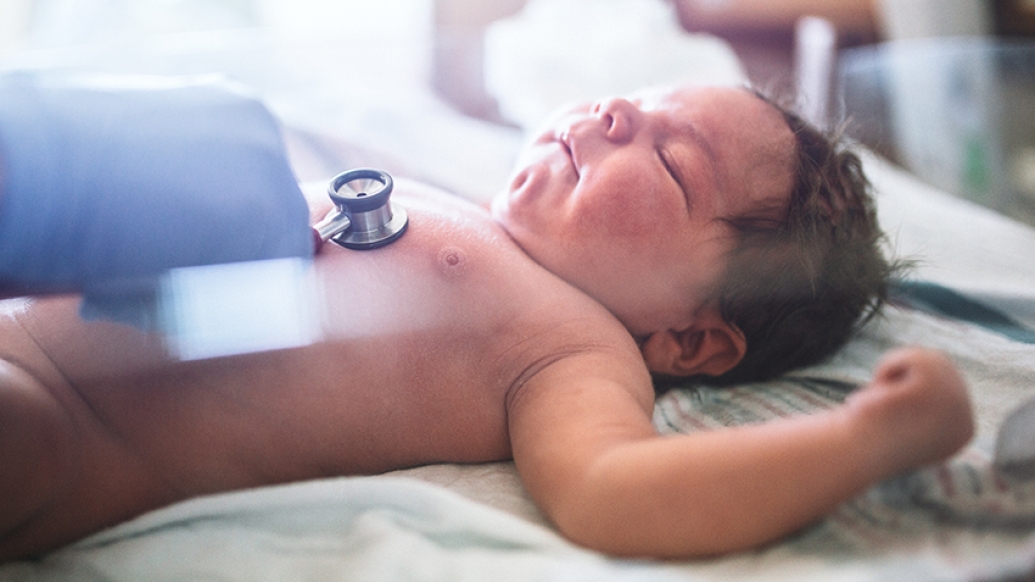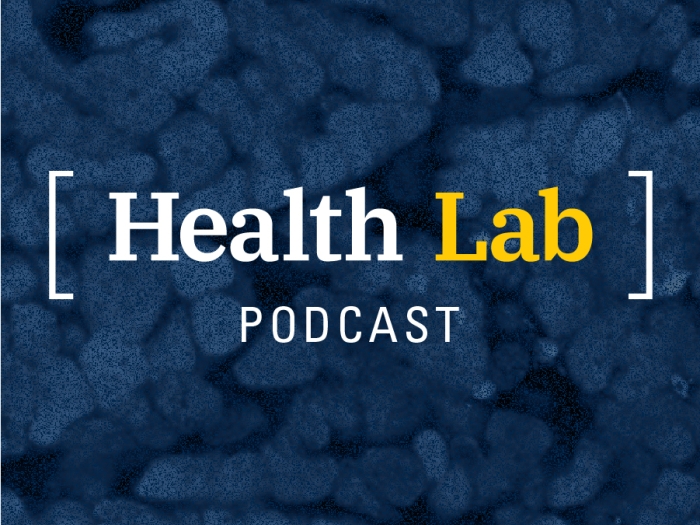Two analyses revealed widely varying treatments — and outcomes — for children with congenital lung malformations.
5:00 PM
Author |

When babies are born with a lesion in their lungs, as 1 in 3,000 are, parents and doctors face a difficult decision: Do they surgically remove the malformation at birth, or wait until the child is older?
Now, researchers across different hospitals are coming together to study the safety, risks and long-term outcomes of treatment for such lesions, which are most often prenatally diagnosed at the routine 20-week ultrasound.
Michigan Medicine researchers presented new findings in two abstracts at the American Academy of Pediatrics National Conference & Exhibition that provide more insight into how differently hospitals approach treatment for newborns with lung abnormalities and which risks surgeons and families should weigh.
Lung malformations may lead to chest infections, pneumonia, asthma, breathing problems or even become malignant.
But patients with smaller lesions may never experience any symptoms at all.
"Fetal management and surgical treatment of patients with suspected congenital lung malformations has evolved greatly over the past 15 years, and centers across the country take different approaches to care," says Shaun Kunisaki, M.D., pediatric surgeon at University of Michigan C.S. Mott Children's Hospital.
"There is a great gap in evidence in the field. We are trying to better understand how each center is managing these cases, what age they are most likely to recommend surgery, what minimally invasive techniques are used and general complication rates.
"Ultimately, our goal is to have the best information available as we counsel families about surgery risks, recovery, long-term complications and outcomes for babies with this condition."
Weighing surgery's risks
The first abstract included data on 521 patients with congenital lung lesions treated at 11 Midwest children's hospitals between 2009 and 2015.
"We found substantial variations in how hospitals manage care for infants with lung lesions, but overall, the risk of death from these surgeries was low," Kunisaki says of the patients, who were tracked through the recently established Midwest Pediatric Surgery Consortium.
Among patients:
-
58 (11 percent) had lesions surgically removed as newborns
-
328 (63 percent) had surgery between 1 and 12 months
-
131 (25 percent) had operations after turning 1
There were postoperative complications in 19 percent of cases, cancerous tumors identified in 2 percent and two deaths.
Kunisaki notes that one of the greatest concerns that may persuade surgeons and families to immediately resect the lesion is that it may be malignant. Of lesions diagnosed after birth, 5 to 8 percent were found to be cancerous.
"Sometimes we can detect that it's cancerous but other times, we can't," he says. "Surgeons should balance surgery risks against the risk that lesions may be malignant. Future studies will look at what the cancer risk is and develop evidence-based guidelines to take the best care of this patient population."
Surgeons should balance surgery risks against the risk that lesions may be malignant. Future studies will look at what the cancer risk is and develop evidence-based guidelines to take the best care of this patient population.Shaun Kunisaki, M.D.
Treating nonsymptomatic lesions
The second abstract at the AAP meeting tackles nonoperative management of lung lesions that have no symptoms.
"Many babies are born with small lesions that don't cause any symptoms at all," Kunisaki says. "The question is whether it should be removed or watched.
"We are asking parents to do lung surgery on their infants when half of them may never have a health issue — we wanted to find out if we were subjecting children to surgery that's essentially not necessary and whether there may be alternatives to caring for them."
The study looked at 39 cases at one hospital and found that postponing surgery until a child is older is safe, but waiting may come with a risk of developing an infection.
A third of lesions were later removed when the child turned around 5 years old without any complications. Another third later evolved into infections or lung problems that needed to be managed.
"This preliminary data suggests that nonoperative management of selected small lung malformations may be a viable alternative to surgery," says Michigan pediatric fellow and researcher Cory Criss, M.D., who presented the second abstract.
"However, roughly one-third of these highly selected patients eventually developed pneumonia or pulmonary-related symptoms requiring surgery. Further studies are needed to understand how lung malformations evolve and how treatment affects long term outcomes."

Explore a variety of health care news & stories by visiting the Health Lab home page for more articles.

Department of Communication at Michigan Medicine
Want top health & research news weekly? Sign up for Health Lab’s newsletters today!





